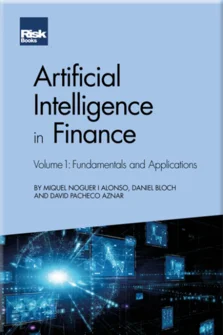Natural language processing
Miquel Noguer i Alonso, Daniel Bloch and David Pacheco Aznar
Natural language processing
We introduce representation learning and deep neural network-style machine learning methods within natural language processing (NLP) and show how they have achieved state-of-the-art results in many human (natural) language tasks, such as language modelling and parsing. NLP is a subfield of computer science, information engineering and artificial intelligence (AI) concerned with the interactions between computers and natural languages, in particular how to program computers to process and analyse large amounts of natural language data.
For more details we refer the reader to the books by, for example, Lawler and Dry (1998), Jurafsky and Martin (2009), Kurdi (2016) and Kurdi (2017).
8.1 AN OVERVIEW
8.1.1 Natural languages
A language is a structured system of communication used by humans. It consists of spoken sounds (in spoken languages) or written elements (in written languages). It can be defined as a system of signs governed by grammatical rules of combination to communicate meaning. For instance, all languages rely on the process of semiosis to relate signs to particular meanings. This definition stresses that human languages can be described as closed structural systems consisting
Copyright Infopro Digital Limited. All rights reserved.
As outlined in our terms and conditions, https://www.infopro-digital.com/terms-and-conditions/subscriptions/ (point 2.4), printing is limited to a single copy.
If you would like to purchase additional rights please email info@risk.net
Copyright Infopro Digital Limited. All rights reserved.
You may share this content using our article tools. As outlined in our terms and conditions, https://www.infopro-digital.com/terms-and-conditions/subscriptions/ (clause 2.4), an Authorised User may only make one copy of the materials for their own personal use. You must also comply with the restrictions in clause 2.5.
If you would like to purchase additional rights please email info@risk.net











